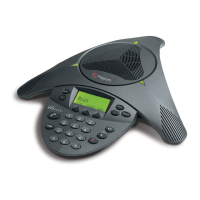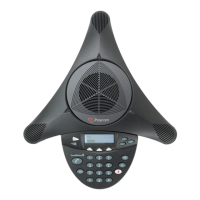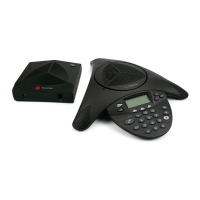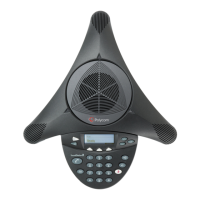THE "BRAIN" MODEL OF INTELLIGIBILITY IN BUSINESS TELEPHONY
Polycom, Inc. Page 7 of 8
a pair of VTX units), reducing reverberation (such as with the microphone selection
techniques described above), and reducing ambient noise can all substantially compensate
for low amplitude.
Interaction. Interactive speech between distant groups can be difficult to conduct for a
number of reasons, including the most straightforward, the absence of a true full-duplex
system that allows transparent interactive speech. The approaches suggested above are
also worth considering: better microphone placement, wider bandwidth, stronger signal.
Sometimes, it will be found that poor interaction is caused by an excessive end-to-end
delay of the audio signal. As one source of delay, the communications channel itself may
be at fault. Although less common today, satellite connections have substantially longer
connection delay than earth-based ones. This is not a problem in one-way
communications such as broadcasts, but can bring catastrophe to an attempted live
interactive conference. Another source of delay can be found in IP telephony systems
which sometimes can have delays as long as 150 ms. Delay also can come from some
conference bridges, either POTS or IP, which can insert substantial delay in their
processing. Room reverberation can increase the apparent delay between talker and
listener. In all these cases, careful design and evaluation is the best first step.
Noise. Common noise sources share much of the same spectrum with speech, and can be
quite effective at masking it and making it difficult to understand. First, try to fix noise at
the source. Move the microphones farther from air conditioner ducts, overhead projectors,
coffee makers, and so on. If the microphones are directional, you can achieve some
benefit by pointing them away from the noise sources (although this must be done in a
manner that still leaves them pointing at the talkers).
If these direct approaches leave the situation wanting, increased bandwidth, again, can
significantly improve intelligibility. By providing more of the talker's voice, the listener
finds it easier to separate speech from noise and follow the conversation. Another
characteristic of the enhanced-bandwidth VTX technology, incidentally, is that it
eliminates noise from the telephone line, so traditional clicking, buzzing, hissing, and
other analog telephony artifacts are removed.
In another supportive approach to this problem, a few systems today incorporate active
noise reduction algorithms that analyze the microphone audio in time and frequency
domains, and apply a sophisticated form of filtering that can reduce fan noise by six or
nine dB, while having little or no effect on voice. The Polycom Vortex and SoundStation
VTX 1000 are examples of such systems.
A combination of the approaches described here is often successful in resolving common
noise problems.

